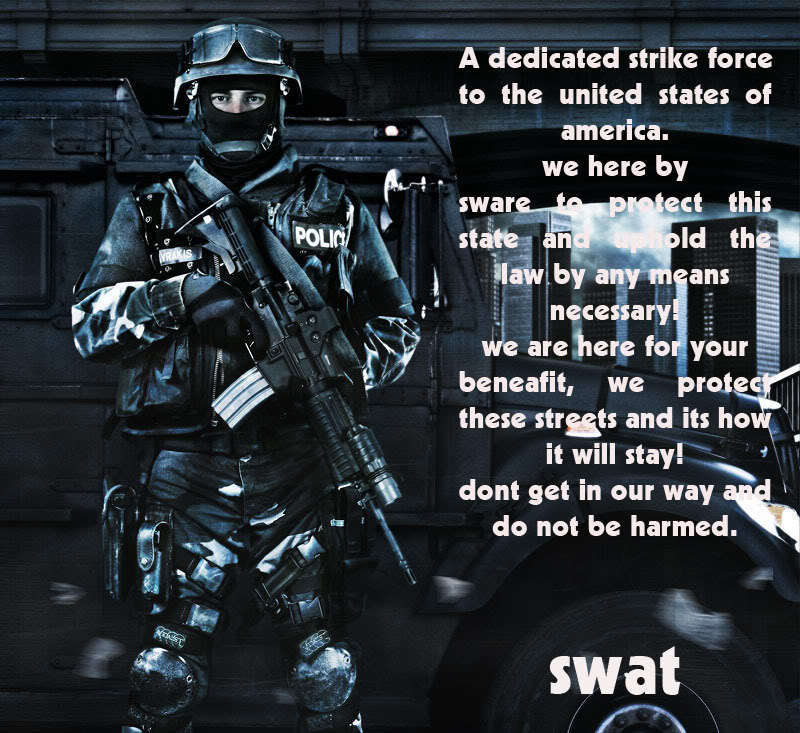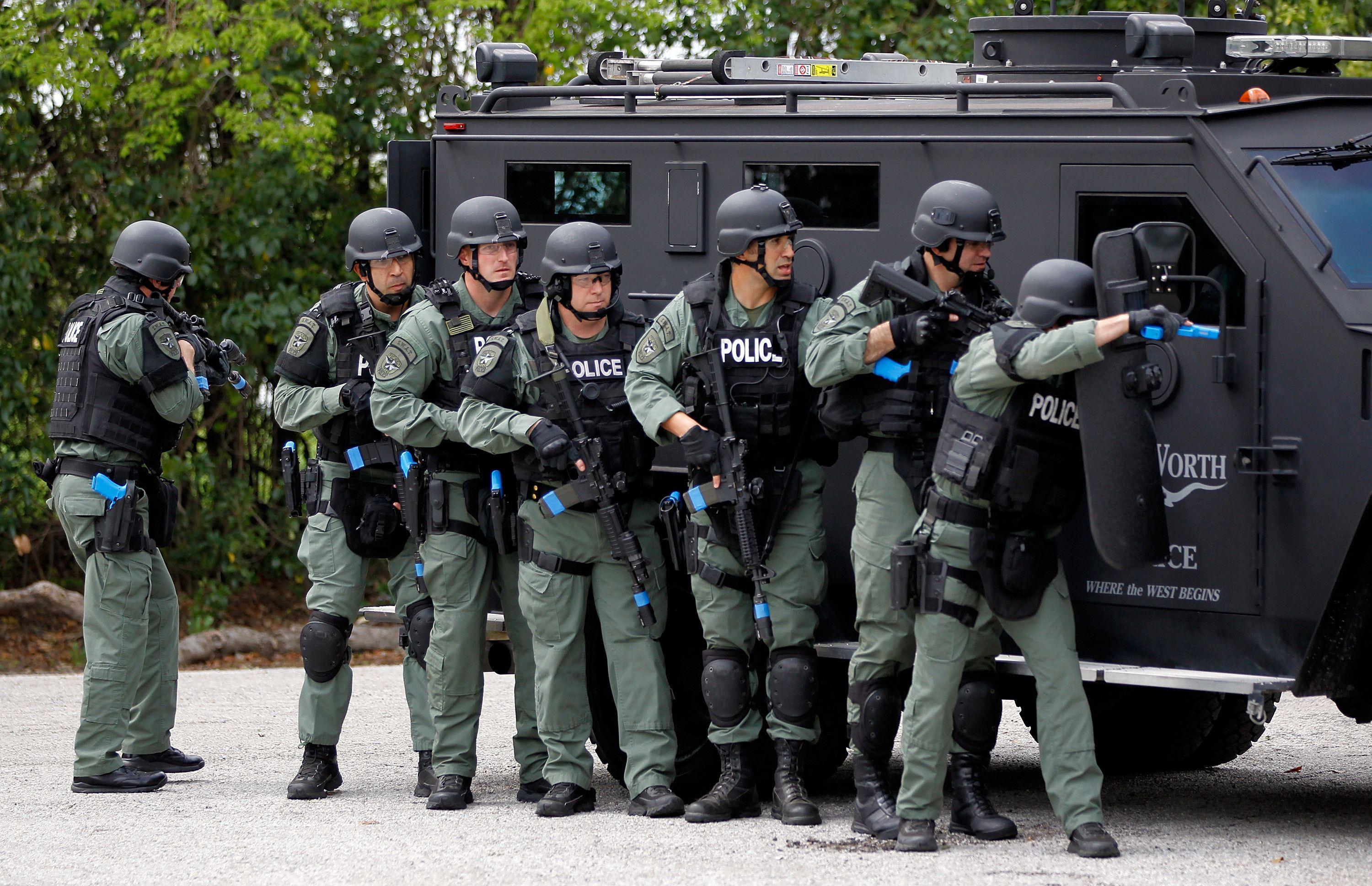SWAT teams are an integral part of modern law enforcement, specializing in handling high-risk situations that regular police officers might not be equipped to manage. These highly trained units play a crucial role in ensuring public safety and maintaining order. In this article, we will explore the meaning behind SWAT, its origins, and the responsibilities of SWAT teams in today's world.
Many people have heard of SWAT but may not fully understand what it represents or the critical functions these units perform. SWAT stands for Special Weapons And Tactics, and its members undergo rigorous training to handle complex and dangerous scenarios. From hostage situations to active shooter events, SWAT teams are called upon to resolve situations that require specialized skills and equipment.
This article delves into the history of SWAT, the training process, equipment used, and the controversies surrounding their deployment. By the end, you'll have a clear understanding of the significance of SWAT teams and their role in modern policing.
Read also:Kaye Capron A Rising Star In The World Of Fashion And Entertainment
Table of Contents
- The History of SWAT Teams
- Structure of SWAT Teams
- SWAT Training and Selection Process
- Specialized Equipment Used by SWAT
- Common Situations Handled by SWAT
- Controversies Surrounding SWAT Deployments
- SWAT Teams Around the World
- The Future of SWAT
- Statistical Insights on SWAT Operations
- Conclusion
The History of SWAT Teams
Origins of SWAT
The concept of SWAT originated in the 1960s during a period of significant social unrest in the United States. The Watts Riots in Los Angeles in 1965 highlighted the need for police departments to have specialized units capable of handling violent and chaotic situations. As a result, the Los Angeles Police Department (LAPD) formed the first SWAT team in 1967.
Initially, SWAT teams were designed to respond to specific threats, such as riots, terrorist attacks, and hostage situations. Over time, their roles expanded to include a wider range of high-risk operations. The success of the LAPD's SWAT program inspired other police departments across the country to establish similar units.
Structure of SWAT Teams
SWAT teams are typically organized as specialized units within larger police departments. They consist of highly trained officers who possess expertise in tactical operations, firearms, and crisis management. These teams are usually led by experienced commanders who oversee operations and ensure coordination with other law enforcement agencies.
Key components of SWAT teams include:
- Tactical Operators: Officers trained in close-quarters combat and high-risk entry.
- Snipers: Expert marksmen responsible for providing long-range support.
- Breaching Specialists: Experts in gaining access to secured areas using various tools and techniques.
- Negotiators: Trained professionals who work to resolve conflicts peacefully.
SWAT Training and Selection Process
Selection Criteria
Joining a SWAT team is a highly competitive process that requires officers to meet stringent physical and mental requirements. Candidates must demonstrate exceptional skills in firearms proficiency, physical fitness, and tactical decision-making. Additionally, they must possess strong communication skills and the ability to work effectively in high-pressure environments.
Key aspects of the selection process include:
Read also:Telugu Rulz Your Ultimate Guide To Telugu Cinema And Culture
- Physical Fitness Tests: Assessing strength, endurance, and agility.
- Psychological Evaluations: Ensuring candidates can handle the stress of SWAT operations.
- Tactical Skills Assessment: Evaluating proficiency in firearms and tactical maneuvers.
Specialized Equipment Used by SWAT
SWAT teams rely on a wide range of specialized equipment to perform their duties effectively. This includes advanced firearms, protective gear, and communication systems. The equipment used by SWAT teams is designed to enhance their ability to respond to various threats while minimizing risks to both officers and civilians.
Common Equipment
Some of the essential equipment used by SWAT teams includes:
- Body Armor: Providing protection against ballistic threats.
- Tactical Rifles: High-precision weapons for long-range engagements.
- Breaching Tools: Equipment used to gain access to secured areas.
Common Situations Handled by SWAT
SWAT teams are deployed in a variety of high-risk situations where standard police procedures may not suffice. These include hostage rescues, active shooter incidents, and barricaded suspect scenarios. The ability of SWAT teams to resolve such situations safely and effectively is a testament to their training and expertise.
Examples of common SWAT deployments include:
- Hostage Negotiations: Working to resolve conflicts peacefully and ensure the safety of hostages.
- High-Risk Arrests: Capturing dangerous suspects with minimal collateral damage.
- Active Shooter Response: Neutralizing threats in dynamic and dangerous environments.
Controversies Surrounding SWAT Deployments
While SWAT teams play a vital role in modern law enforcement, their use has not been without controversy. Critics argue that the militarization of police forces has led to excessive use of force in situations that do not warrant SWAT-level intervention. There are concerns about the potential for escalation and the impact on community relations.
Key controversies include:
- Militarization of Police: The increasing use of military-grade equipment by SWAT teams.
- Overuse of SWAT Tactics: Deployments in situations that do not require specialized intervention.
SWAT Teams Around the World
The concept of SWAT is not limited to the United States. Many countries have developed their own specialized tactical units to address similar threats. These units often share common goals and strategies but may differ in structure and operational methods based on local needs and resources.
International SWAT Equivalents
Examples of international SWAT equivalents include:
- GIGN (France): A specialized counter-terrorism unit known for its effectiveness in hostage rescue operations.
- SAS (UK): A special forces unit with expertise in covert operations and crisis management.
- GSG 9 (Germany): A counter-terrorism unit renowned for its success in resolving high-profile incidents.
The Future of SWAT
As technology continues to evolve, so too will the capabilities of SWAT teams. Advances in robotics, surveillance, and communication systems will enhance their ability to respond to threats while minimizing risks to officers and civilians. The future of SWAT lies in leveraging these advancements to improve operational effectiveness and maintain public trust.
Statistical Insights on SWAT Operations
Data from various studies and reports provide valuable insights into the effectiveness and impact of SWAT teams. According to the Bureau of Justice Statistics, SWAT deployments have increased significantly over the past few decades, reflecting the growing complexity of modern policing challenges.
Key statistics include:
- SWAT deployments have increased by over 1,400% since the 1980s.
- Approximately 70% of SWAT operations involve drug-related warrants.
Conclusion
In conclusion, SWAT stands for Special Weapons And Tactics, representing a critical component of modern law enforcement. These highly trained units play a vital role in addressing high-risk situations and ensuring public safety. While controversies surrounding their use exist, the importance of SWAT teams in maintaining order and protecting communities cannot be overstated.
We encourage readers to share their thoughts and experiences in the comments section below. Additionally, feel free to explore other articles on our site for more insights into law enforcement and related topics. Together, we can foster a deeper understanding of the challenges and opportunities facing modern policing.

